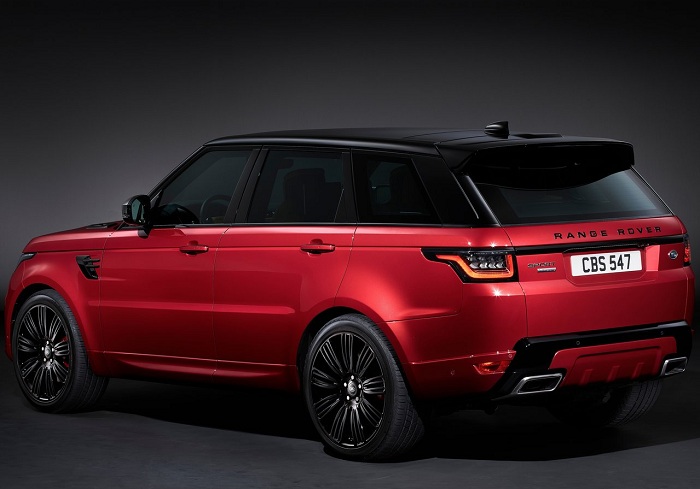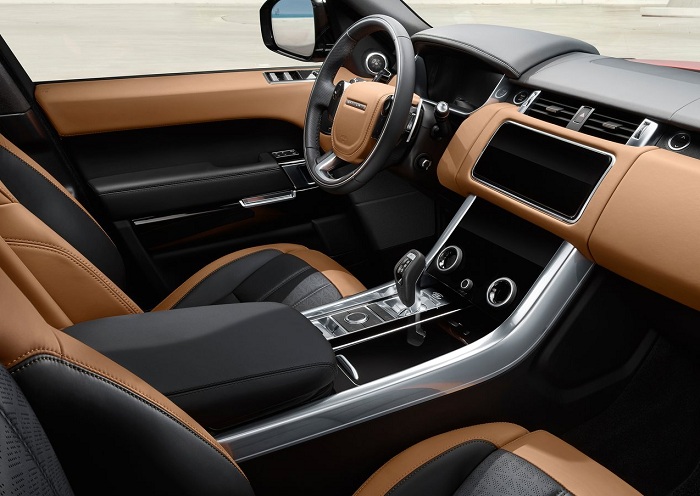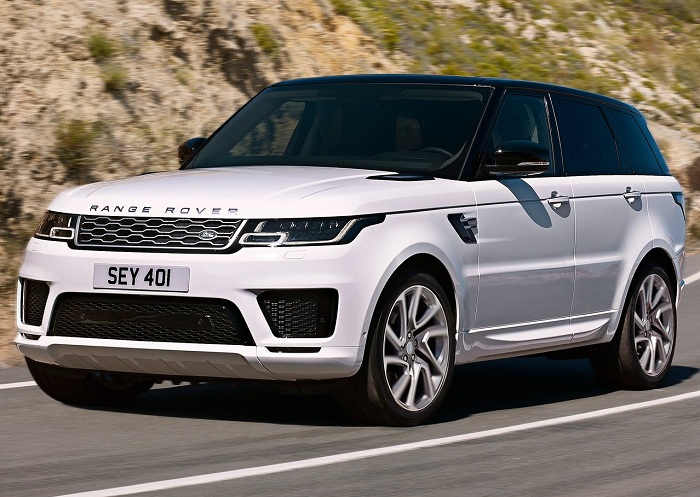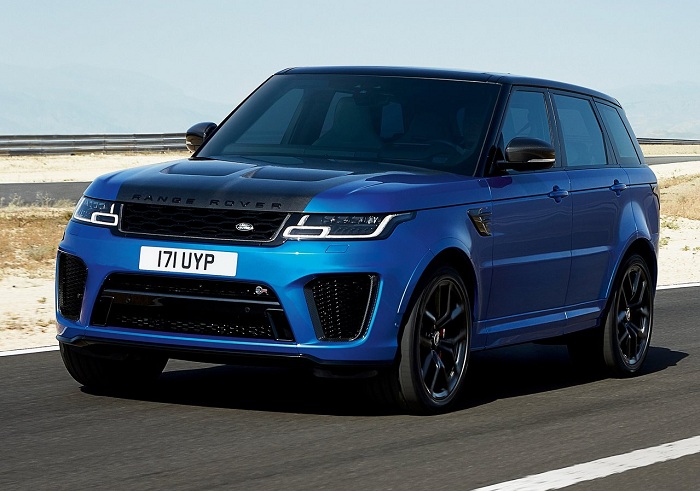Range Rover Sport
Aesthetically, the Sport now takes after the recently launched Velar and receives new slimmer headlights with square integrated LED daytime running lights, new fenders and grille, redesigned front and rear bumpers, three new alloy wheel designs with sizes ranging from 21 to 22-inches and a new Black Exterior Pack with gloss detailing on HSE Dynamic models.
In addition to a new Byron Blue metallic hue, the Sport can also be speificied with new Carbon Fibre Exterior Pack on all models, which consists of gloss black and carbon fibre finishes on the grille, fender vents, mirrors, bonnet louvers and on the bootlid.

New is a choice of four different lighting options all with running front and rear indicators. The standard Premium setup consists of 24 LEDs with optional Auto High Beam Assist, while the next step-up Matrix adds an additional 28 LEDs that can split the beam into vertical strips individually.
The third-tier Pixel arrangement is made up of 142 LEDs and not only includes a optional adaptive swivel function, but splits the main beam horizontally and vertically to avoid dazzling oncoming vehicles. At the sharp end, the Pixel Laser High Beam adds two further LEDs and four laser diodes, providing a light projection of more than 500 metres and dimming the lights automatically when a vehicle from the front is detected.
Aside from a new choice of materials and 10 ambient lighting colours, the interior now features the same Touch Pro Duo setup as the Velar, which consists of two ten-inch displays with the top mounted screen angled slightly to counter glare. Both also feature a tablet-like swipe function and can be customised to suit preference.

Further new in-car tech includes dual 10-inch rear screens, up to 14 connection points whether it be Aux, USB, HDMI or 12-volt sockets, 4G Wi-Fi and a choice of four sound systems; the standard Land Rover 250-watt and three made by Meridian with 380 watts and 12-speakers, 825-watts and 18-speaker and 1 700-watts with 22-speaker in the case of the top flight 3D Signature unit.
Driver assistance tech has also been sharpened up and now includes, either optional or standard, Lane Departure Warning, Blind Spot Monitor, Semi-autonomous Braking, Lane Keep Assist, 360 degree camera, Rear Traffic Assist, Park Assist, Driver Condition Monitor, Adaptive Cruise Control with Queue Assist and Traffic Sign Recognition.
Engine options for the Sport are mostly carried over with diesel power coming from a 2.0-litre SD4 developing 177 kW and 500 Nm of torque, and two 3.0-litre V6s making 190 kW/600 Nm in the TDV6 and 225 kW/700 Nm in the SDV6. Capping the oil burners off is a 4.4-litre TDV8 producing 250 kW and 740 Nm.
The big addition though is a four-cylinder turbocharged petrol engine in the Si4 that churns out 221 kW and 400 Nm of torque, and a bump in power from 375 kW to 386 kW for the 5.0-litre supercharged V8 with torque unchanged at 625 Nm. The 3.0-litre supercharged V6 petrol meanwhile remains unchanged with outputs of 250 kW and 450 Nm of torque.
An eight-speed automatic gearbox is again standard across the range, as is Land Rover's Terrain Response 2 off-road system, Low Traction Launch System and air suspension on all models bar the SD4.
Range Rover Sport PHEV

Replacing the SDV6 diesel hybrid, the new Sport PHEV or P400e, adopts the same 2.0-litre Ingenium petrol engine as the Si4, but adds a 85 kW electric motor for a total system output of 297 kW and 640 Nm of torque. Linked to a permanent four-wheel drive system, the 13.1 kWh lithium-ion battery pack allows for a electric-only range of 51 km, and 0-100 km/h in 6.7 seconds with a top speed of 220 km/h. Fuel consumption is a claimed 2.8 L/100 km and emissions of 64 g/km.
According to JLR, top speed for the P400e is limited to 137 km/h in all electric mode, with a claimed charging time of 7.5 hours using a 10 amp socket or 2 hours 45 min from a 32 amp unit.
Range Rover Sport SVR

Incorporating the same exterior and interior revisions as the regular Sport albeit with a central exposed carbon fibre weave option on the bonnet, the SVR also gets new Supersport heated front and rear seats claimed to reduce weight by 30 kg, optional lightweight 22-inch alloy wheels and new brake-pad and discs.
Up front, the 5.0-litre supercharged V8 now pumps out the same 423 kW and 700 Nm as the Jaguar F-Type SVR, allowing the Sport SVR to hit 100 km/h from standstill in 4.5 seconds.
Local availability of the updated Range Rover Sport and SVR is expected to commence next year, while the PHEV is unlikely to become available.
















